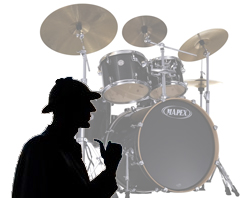It’s time for our second audio mystery. It involves a drum set, two audio techs, and a lot of head scratching. It started on a Wednesday night…
The drums sounded dead. I’m talking “He’s dead, Jim” dead.
Steve and I were at front-of-house trying to dial in a good drum mix. There wasn’t much we could do with each kit piece, be it toms or kick or snare. It sounded horrible.
But two hours later, without any mix changes, it sounded better.
This wasn’t the first time we’d encountered this problem. It had happened a month or two earlier. In the words of my fourth grade elementary school teacher, it was “time to put on our thinking caps.” (Did I mention I hate that phrase?)
Initial Investigation
Steve and I began brainstorming through the possible reasons for the dead drum sound:
1. The drummer was warming up. We have a handful of drummers but we typically don’t see that long of a warm-up period and the warming up had been only volume-related.
2. The drums needed to warm up. In the past, I’ve heard them sound a little different as the night went on, but nothing this drastic. Funny how you never think about these things until something is wrong.
3. Room temperature changes. That summer, the Midwest experienced a wide swing of weather, from cool summer days to hot-and-humid to cool-and-humid. Some of that humidity could be noticed in the sanctuary. Could that be it?
Reaching Out For Help
A few days later, I reached out for help. The idea of humidity came up again. The problem with the whole “it was humid that day” idea is that it’s hard to repeat and test. But how could a little humidity in a room make such a significant difference?
I contacted professional drummer and pro audio guy, Daniel East, who told me:
”…humidity can affect [drum] heads & shells. Cymbals, too, actually…like any acoustic instrument where temperature and moisture change based on venue and transport, allowing at least approx. 30 minutes for any acoustic instrument to acclimate is important (like a winter-cold road trip to a dry heated venue, as well). In humidity, especially the sub-tropics like South Florida, the shells expand/contract with the Mylar heads with the temperature changes. Drums can even have condensation build up to the point of being wet to the touch.”





















